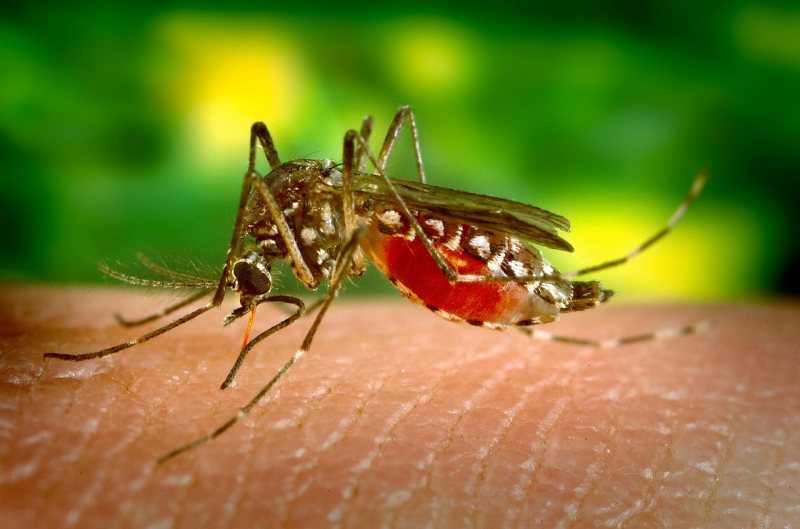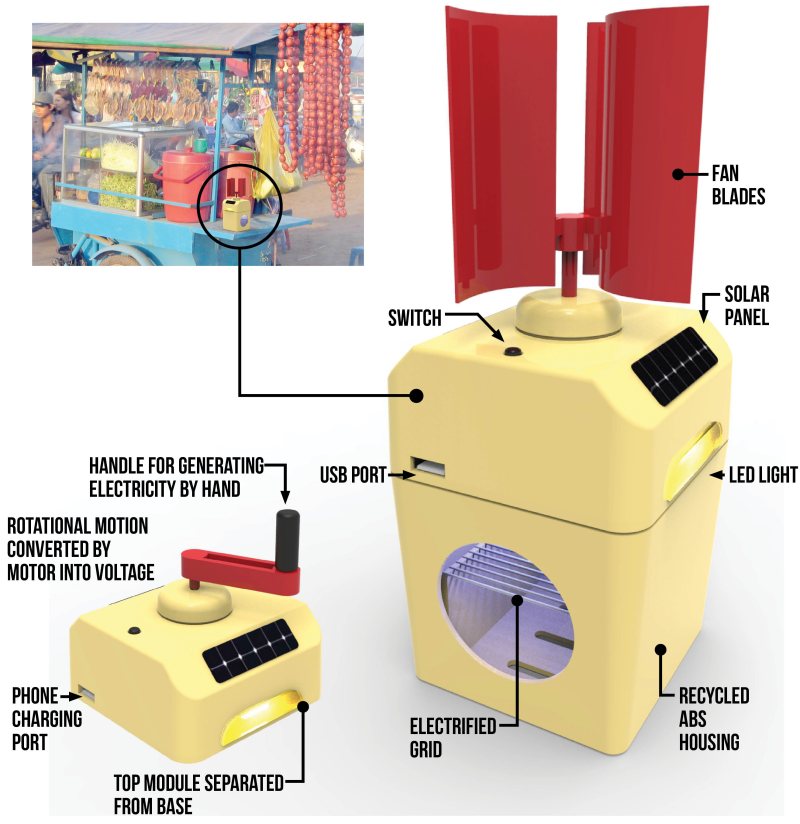
Image: skeeze
A hand cranked, wind and solar powered mosquito zapper designed in Australia is a national runner-up in the 2018 James Dyson Award.
Mosquitoes have brought much misery and death to humanity – some of the diseases they transmit include:
- Dengue fever
- Ross River virus
- Barmah Forest virus
- Japanese encephalitis
- Murray Valley encephalitis
- Chikungunya virus
- Malaria
- West Nile virus
- Yellow fever
- Zika virus
Malaria, dengue fever and yellow fever alone are collectively responsible for several million deaths each year.
In the Indian state of Gujarat, the government embarked on a campaign last year to make the state malaria-free by 2022. It’s even using drones to check for mosquito breeding sites in urban areas. Dengue fever is also a major issue in the state, with 2,818 cases between August and September 2015. Street vendors are particularly at risk.
An Australian designed device for deployment in the fight against mosquitoes in places such as Gujurat is the Indra Mosquito Zapper, created by Paul Eterovich.
The device features a solar panel and mini-vertical axis wind turbine for charging. When the wind isn’t blowing and the sun isn’t shining, the Indra Mosquito Zapper can be charged by removing the turbine blades and plugging in the hand-crank module. Made with recycled materials, the device can also provide light and small devices can be powered via a USB port.

Image: Paul Eterovich
The Indra Mosquito Zapper uses UV light to attract mosquitoes into the kill chamber where they are zapped by an electrified grid. The capacity of the internal battery isn’t mentioned, nor how long it can run for on a fully charged battery.
Mr Eterovich was named one of two Australian runners-up in this year’s James Dyson Awards for his invention.
“I feel a sense of accomplishment to have my design acknowledged,” says Mr Eterovich. “There have been many challenges along the way, but my hard work and passion for creating have enabled me to overcome them.”
Mr. Eterovich’s intention is for the device to be manufactured locally in countries where it is deployed, making use of recycled materials sourced from e-waste and providing local jobs.
There are other commercially available solar powered bug zappers around that are quite cheap to purchase, but those don’t also offer the additional feature of charging other devices; nor the hand-crank/wind power options.
The Dyson Awards page for the Indra Mosquito Zapper is here and other information regarding the device here.
Other solar related devices entered in this year’s awards from around the world (some of which scored a guernsey) included:
SENSLAR
SENSLAR is a floating solar platform system that angles panels according to the sun’s position – basically a solar tracker for aquatic applications. It’s claimed it provides more than 40% improvement in energy harvesting.
LAZAR
LAZAR is a compact, user-friendly solar cell laser cutting machine that may also be used to fix defective solar cells.
3S-CB
3S-CB maintains temperature at optimum conditions for chicks, reducing energy bills for breeders.
Violet
Violet was another Australian entrant and is the UNSW Solar Racing Team Sunswift’s sixth solar-electric vehicle. Violet was an entrant in last year’s World Solar Challenge.
The James Dyson Award provides an opportunity for budding inventors to make a name for themselves by designing something that solves a problem.
Now the national awards judging is over, Dyson engineers are whittling down the remaining competitors to a shortlist of 20 for the international award, which will be announced on September 21. The overall international winner will be announced on November 15.

 RSS - Posts
RSS - Posts



Interesting…but independent studies show that mosquitos are attracted by CO2 emissions as in human breath rather than light. Furthermore, it is only the female of the species that bites and sucks blood. Other attractants such as octenol have been shown to attract mozzies which is why a CO2 emitter plus octenol is so efficent. I suspect that this clever invention will atteact lots of bugs but will have limited success on the target species.(scientific references available).
What next? A hand cranked, wind and solar powered spelling checker?
There are currently solar powered bug zappers at Bunnings. I didn’t check, but it’s possible they were made in India. From an engineering viewpoint, I think the addition of a few more solar cells so it can charge up on an overcast day rather than a wind turbine or hand crank would be the cost effective way to go.
From a biological viewpoint, as Geoff points out above, mosquitoes aren’t attracted to ultraviolet light and that’s a big problem. Plenty of other insects are and after they’re zapped most people don’t sort through them with a hand lens to determine the species. Of course, if someone had a use for fried insect parts this could still be a useful device. But it’s not going to be useful for controlling mosquito borne diseases. It could do the opposite if it kills things that eat mosquitoes.
I purchased a couple of different types of solar powered bug zappers on EBAY, both were better quality than the Bunning’s one, while the plug-in mains powered zapper is way too expensive.
The cheaper of the 2 EBAY ones was pretty ineffectual, although it does kill a few, while the more expensive one works great (includes a rechargeable battery too). No – it doesn’t kill ALL the mozzies and midges but if you experiment with the placement a little in relation to where you sit and your immediate physical surroundings , you get a very noticeable reduction in ‘bites incurred’. Combine it with some insect repelling pot plants, and the overall result is pretty good.
The benefit is probably ‘marginal’ but… if you also combine them simultaneously with other ‘natural’ non-toxic methods solar powered zappers have a role to play.